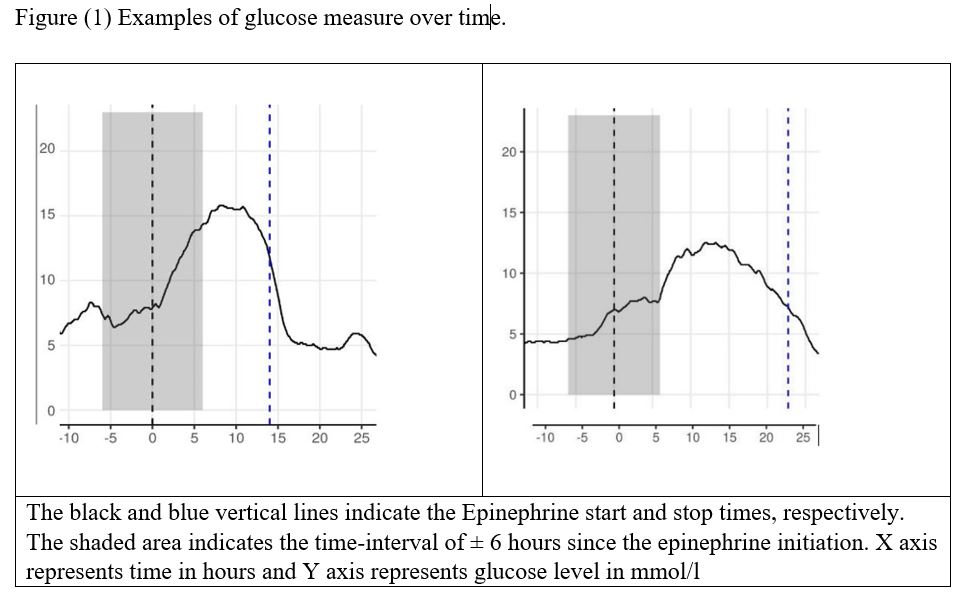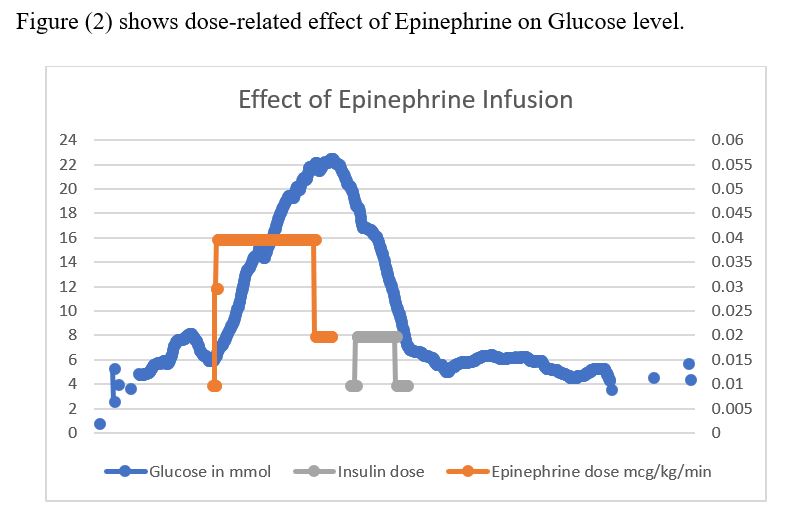Neonatal General
Neonatal General 6: Neurology
716 - The effect of epinephrine on inducing Cori Cycle in infants with Hypoxic Ischemic Encephalopathy (HIE) undergoing Therapeutic Hypothermia (TH)
Publication Number: 716.234
.jpg)
Raef Abdulqader A Qeretli, MD (he/him/his)
Fellow
The Hospital for Sick Children
Ottawa, Ontario, Canada
Presenting Author(s)
Background: Epinephrine infusion activates β-2 adrenergic receptors which increases glycolysis and glycogenolysis resulting in hyperglycemia and hyperlacticaemia. In infants with hypoxic ischemic injury treated with therapeutic hypothermia (TH) , epinephrine infusion may induce metabolic changes similar to Cori Cycle.
Objective: To describe the changes in blood glucose level after epinephrine infusion in infants with moderate to severe HIE patients undergoing TH.
Design/Methods: This is a subgroup of neonates recruited prospectively for NOGIN study (Neurological Outcome of Glycemia in Neonatal Encephalopathy) admitted with neonatal encephalopathy between 2014 and 2019. Neonates who received TH within the first 12 hours of life and who received epinephrine infusion for hemodynamic instability were included. Continuous glucose data were collected for approximately 72 h. The measurements were blinded and unavailable to clinicians for real-time management, and the patients were managed via clinical intermittent glucose testing as per standard of care. GIR (glucose infusion rate) was calculated and correlated with epinephrine dose.
Results:
A total of 14 patients were included. The median age at start of epinephrine infusion was1127 +/- 539 minutes for a median duration of 1726 +/- 1138 minutes. Glucose administration (mM/min) and glucose levels were recorded for 25 hours, and data are presented for ± 6 hours epochs before after the start of epinephrine infusion. Linear regression was used to determine the relationship between glucose levels and glucose exposure; paired t-test was used to determine differences between the slopes prior to, during and after epinephrine infusion. Epinephrine infusion increased the slope of the glucose level/glucose exposure curve with an average slope of 0.139 and 0.699 before and during epinephrine infusion, respectively (p=0.019); figures (1&2) with an estimated mean difference of 0.559 [0.112, 1.006, 95% CI). Glucose infusion rates across patients, before and after epinephrine initiation did differ.
Conclusion(s):
Here we show in a small cohort of infants with HIE that glucose intolerance and hyperglycemia can occur in infants concurrently treated with epinephrine. We speculate that these metabolic changes are secondary to activation of the Cori Cycle as a result of epinephrine exposure. Further studies in neonates with HIE treated with /without TH are needed to confirm this observation.
Acknowledge: The Canadian Institutes of Health Research (CIHR) for funding.

